
|
Astronomy Picture Of the Day (APOD)
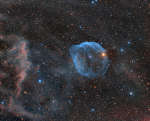 Sharpless 308: Star Bubble
Sharpless 308: Star Bubble
30.01.2019
Blown by fast winds from a hot, massive star, this cosmic bubble is huge. Cataloged as Sharpless 2-308 it lies some 5,200 light-years away toward the constellation of the Big Dog (Canis Major) and covers slightly more of the sky than a Full Moon.
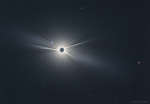 Wide Field View of Great American Eclipse
Wide Field View of Great American Eclipse
29.01.2019
Only in the fleeting darkness of a total solar eclipse is the light of the solar corona easily visible. Normally overwhelmed by the bright solar disk, the expansive corona, the sun's outer atmosphere, is an alluring sight.
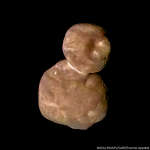 Ultima Thule from New Horizons
Ultima Thule from New Horizons
28.01.2019
How do distant asteroids differ from those near the Sun? To help find out, NASA sent the robotic New Horizons spacecraft past the classical Kuiper belt object 2014 MU69, nicknamed Ultima Thule, the farthest asteroid yet visited by a human spacecraft.
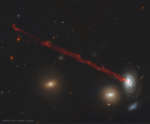 The Long Gas Tail of Spiral Galaxy D100
The Long Gas Tail of Spiral Galaxy D100
27.01.2019
Why is there long red streak attached to this galaxy? The streak is made mostly of glowing hydrogen that has been systematically stripped away as the galaxy moved through the ambient hot gas in a cluster of galaxies. Specifically, the galaxy is spiral galaxy D100, and cluster is the Coma Cluster of galaxies.
 From the Northern to the Southern Cross
From the Northern to the Southern Cross
26.01.2019
There is a road that connects the Northern to the Southern Cross but you have to be at the right place and time to see it. The road, as pictured here, is actually...
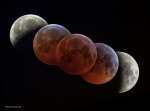 The Umbra of Earth
The Umbra of Earth
25.01.2019
The dark, inner shadow of planet Earth is called the umbra. Shaped like a cone extending into space, it has a circular cross section most easily seen during a lunar eclipse. For example...
 Moon Struck
Moon Struck
24.01.2019
Craters produced by ancient impacts on the airless Moon have long been a familiar sight. But only since the 1990s have observers began to regularly record and study optical flashes on the lunar surface, likely explosions resulting from impacting meteoroids. Of course, the flashes are difficult to see against a bright, sunlit lunar surface.
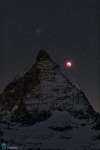 Matterhorn, Moon, and Meteor
Matterhorn, Moon, and Meteor
23.01.2019
Fans of planet Earth probably recognize the Matterhorn in the foreground of this night skyscape. Famed in mountaineering history, the 4,478 meter Alpine mountain stands next to the totally eclipsed Moon. In spite...
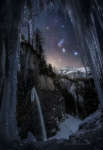 Orion over the Austrian Alps
Orion over the Austrian Alps
22.01.2019
Do you recognize this constellation? Through the icicles and past the mountains is Orion, one of the most identifiable star groupings on the sky and an icon familiar to humanity for over 30,000 years.
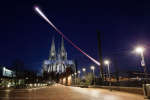 Lunar Eclipse over Cologne Cathedral
Lunar Eclipse over Cologne Cathedral
21.01.2019
Why would a bright full Moon suddenly become dark? Because it entered the shadow of the Earth. That's what happened Sunday night as the Moon underwent a total lunar eclipse. Dubbed by some...
|
January February March April May June July August September October November December |
|||||||||||||||||||||||||||||||||||||||||||||||||